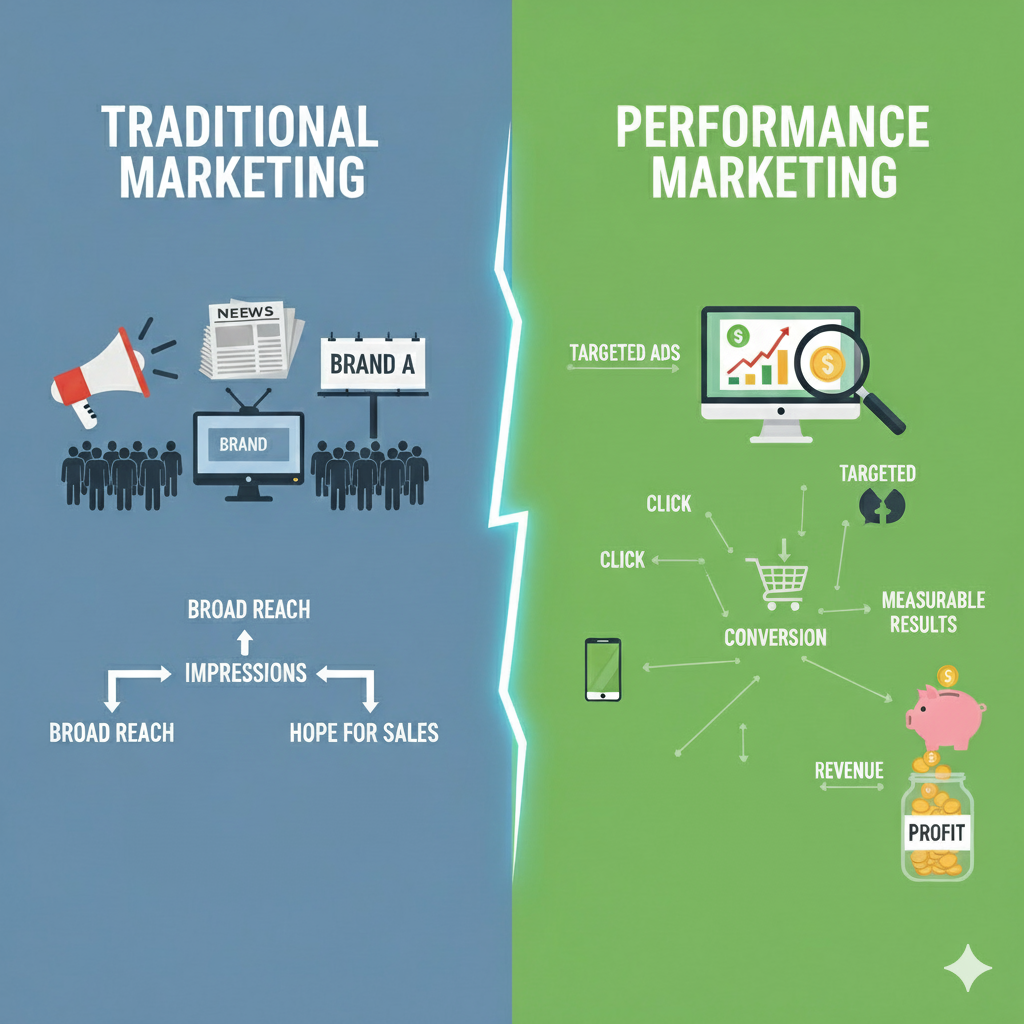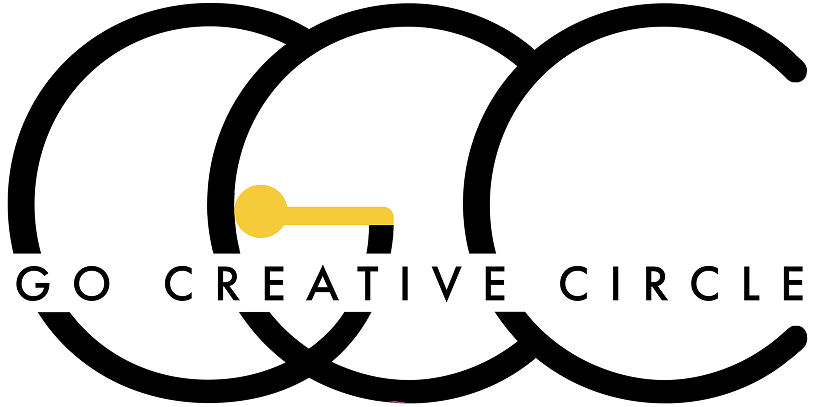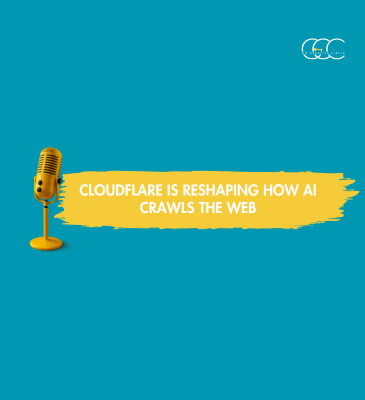
Index
- Understanding Performance Marketing in the UAE
- What Makes Performance Marketing Different from Traditional Marketing
- Performance Marketing vs. Brand Marketing
- Why Performance Marketing is Ideal for ROI-Focused Campaigns
- Choosing the Right Channels for Performance Marketing
- Search Engine Marketing (SEM)
- Social Media Advertising
- Affiliate and Influencer Marketing
- Native and Display Ads
- Email and Content Marketing
- Setting Up Your First Campaign
- Optimizing and Scaling Your Strategy
- Final Words
Performance marketing generates 78% higher ROI compared to traditional marketing approaches. Unlike conventional strategies that focus on reach and impressions, this data-driven approach ensures every penny spent is tied directly to measurable results, making it one of the most sought-after strategies among performance marketing agencies and performance marketing companies in the UAE.
However, mastering performance marketing requires understanding specific channels and metrics. Whether you’re exploring Google Ads campaigns with a Google Ads agency, optimizing Meta Ads with a Meta Ads agency in the UAE, or calculating metrics like CPC, CPL, and ROAS, this comprehensive performance marketing guide will walk you through each critical step. Furthermore, you’ll learn how to track performance marketing metrics that actually matter to your business goals.
Throughout this guide, we’ll break down complex concepts into actionable strategies, specifically designed for beginners who want to drive real, measurable results. By focusing on platforms that deliver the highest return on investment, you’ll develop the skills to create, measure, and optimize campaigns that consistently deliver results.

Understanding Performance Marketing in the UAE
Performance marketing fundamentally changes how businesses approach marketing by paying only for measurable results rather than impressions. This digital approach emerged as a direct response to the century-old challenge famously articulated by retailer John Wanamaker: “Half the money I spend on advertising is wasted; the trouble is I don’t know which half.” With its data-driven foundation, performance marketing in the UAE solves this dilemma by connecting every penny spent to specific outcomes.
What Makes Performance Marketing Different from Traditional Marketing
Traditional marketing operates on a fixed-cost model regardless of results, typically requiring substantial upfront investment with limited tracking capabilities. In contrast, performance marketing companies follow a pay-per-action model, where advertisers only pay when users complete specific actions like clicks, leads, or sales. This creates a crucial shift in accountability.
The differences extend beyond payment structures:
- Measurability: Performance marketing provides real-time analytics and precise ROI tracking, while traditional marketing relies on estimated reach and frequency.
- Targeting: Performance enables laser-focused audience targeting based on behaviors and interests, versus a traditional broad demographic approach.
- Flexibility: Campaigns can be adjusted continuously in performance marketing, whereas traditional campaigns remain fixed once published.
- Speed: Performance delivers quick feedback and instant results, while traditional methods build slowly over time.
Traditional marketing broadcasts messages widely, hoping to reach potential customers. Conversely, performance marketing in the UAE precisely targets those most likely to convert, making every interaction count.
Performance Marketing vs. Brand Marketing
Brand marketing focuses on building long-term awareness and emotional connections, while performance marketing drives specific actions and immediate results. Nevertheless, these approaches aren’t mutually exclusive—they serve different stages of the customer journey.
According to a McKinsey study, data-driven performance marketing approaches can now be applied effectively to branding activities, creating what they call “performance branding.” This integration has demonstrated marketing efficiency gains of up to 30% and incremental top-line growth of up to 10% without increasing marketing budgets.
Brand marketing builds foundational awareness and trust, whereas performance marketing agencies convert that awareness into measurable actions. Organizations that overemphasize performance without brand building may find themselves “forever hooked on high acquisition costs” with “no baseline of awareness and trust.” Balancing both approaches creates optimal results.

Why Performance Marketing is Ideal for ROI-Focused Campaigns
Performance marketing excels for businesses prioritizing measurable outcomes and return on investment. In 2021 alone, U.S. companies invested $9.1 billion in performance marketing, with spending rising approximately 47% between 2020 and 2021. This substantial growth reflects its effectiveness for ROI-driven campaigns.
Several factors make performance marketing companies in the UAE particularly valuable:
- Data-driven optimization: Businesses can optimize campaigns in real time, directing resources toward the highest-performing channels.
- Detailed analytics: Understand each marketing dollar’s impact through metrics like cost-per-click (CPC), cost-per-acquisition (CPA), and return on ad spend (ROAS).
Performance marketing particularly suits businesses with shorter sales cycles, high competition, and emphasis on immediate returns—notably e-commerce retailers, SaaS companies, travel and hospitality businesses, and small local businesses. The ability to scale successful campaigns quickly while pausing underperforming ones creates operational efficiency impossible with traditional methods.
For startups and small businesses with limited budgets, performance marketing agencies provide a cost-effective way to compete against larger competitors by focusing resources exactly where they generate results. This targeted approach typically leads to higher returns compared to more generic campaigns.
Choosing the Right Channels for Performance Marketing
Selecting the right mix of performance marketing channels is crucial for maximizing return on your advertising investment. Each channel offers unique advantages and works best for specific campaign objectives. Let’s examine the most effective options for your performance marketing strategy.

Search Engine Marketing (SEM)
SEM places your brand at the exact moment when potential customers are actively searching for solutions. This PPC advertising company model ensures you only pay when someone clicks on your ad, making it highly cost-effective. SEM drives awareness by positioning your brand at the top of search results, increasing visibility, and building trust with your audience. SEM consistently delivers higher click-through rates and conversions than passive marketing forms.
The process involves bidding on relevant keywords so your ads appear when users search those terms. After conducting keyword research, you can create targeted campaigns that reach users with high purchase intent. This approach works particularly well for ROI-focused businesses with shorter sales cycles.
Social Media Advertising
Social media platforms provide extraordinary targeting capabilities based on demographics, interests, and behavioral data. This precision allows you to deliver tailored messages to your ideal audience, significantly boosting conversion rates. The model typically focuses on cost per click, cost per view.
When implementing social media campaigns, consider platforms where your target audience spends time. Options include Facebook, Instagram, Twitter, LinkedIn, Pinterest, TikTok, and YouTube. Though costs have risen recently—with Facebook’s CPM increasing 61% year-over-year and TikTok’s increasing 185%—social remains essential for comprehensive digital advertising strategies.
Affiliate and Influencer Marketing
Affiliate marketing partners your brand with publishers who promote your products for a commission on each sale or conversion they drive. This approach is particularly effective as brands combining influencer and affiliate programs generate 46% higher affiliate-based sales. For the health and beauty sectors, this increase reaches 178%.
The affiliate model is low-risk since you pay only for results. Additionally, influencers transform social media presence into powerful marketing engines, placing your products directly in front of engaged audiences. Consumer trust in influencers is substantial—eight out of ten people purchase after seeing influencer recommendations.
Native and Display Ads
Native ads seamlessly blend with surrounding content, while display ads stand out visually. This fundamental difference impacts performance: native ads are viewed 53% more frequently than display ads and are 9 times more likely to be clicked. Users also spend 18% more time interacting with native ads compared to display ads.
Display advertising excels at increasing campaign reach and creating strong first impressions through bold, contrasting designs. Consequently, they work well for products requiring limited explanation or for retargeting campaigns. Native advertising, meanwhile, focuses on building brand awareness through content that provides value rather than interrupting the user experience.
Email and Content Marketing
Email marketing delivers exceptional ROI—for every $1 invested, the average return is $36. This channel thrives on personalization, with campaigns tailored to specific groups driving 6x more transactions. Marketers who segment their lists effectively see 760% higher revenue.
Email excels at nurturing leads through targeted content sequences, combining performance metrics with relationship building. According to Gartner research, 44% of Chief Marketing Officers consider email essential to their overall digital marketing guide, allocating nearly 8% of their entire digital marketing budget to this channel.
Selecting the right combination of channels depends on your specific business objectives, audience behaviors, and conversion goals. Start with 2-3 channels, monitor performance data, and gradually expand your mix as you identify what works best for your unique situation.
Setting Up Your First Campaign
Launching your first performance marketing campaign requires careful planning and strategic execution. The success of your campaign hinges on how well you define goals, select platforms, craft creatives, and manage your budget. Let’s break down this process into actionable steps.
Define your conversion goals
Establishing clear conversion goals transforms abstract website traffic into concrete, actionable insights about marketing performance. Fundamentally, a conversion goal is a specific action you want potential customers to complete. These goals typically fall into two categories:
- Macro conversions: Major actions like purchases, subscriptions, or demo requests
- Micro conversions: Smaller steps like newsletter sign-ups or video views that lead to macro conversions
Setting effective goals enables you to move beyond vanity metrics like pageviews and focus on meaningful interactions that drive genuine business value. Following the SMART framework (Specific, Measurable, Achievable, Relevant, Time-bound) ensures your goals are clear and attainable. Remember that well-defined goals allow all stakeholders to align on what constitutes success.
Pick the right platform and audience
After defining goals, select platforms where your target audience is most active. Your choice should align with your campaign objectives—whether that’s increasing brand awareness, generating leads, or boosting sales.
Begin by creating detailed buyer personas based on demographics, interests, and behaviors. This information guides your platform selection and ensures your message resonates with potential customers. For instance, if you sell fitness equipment, your target audience might include health-conscious individuals who follow fitness influencers on social media.
Create compelling ad creatives
Effective ad creatives capture attention and drive engagement through four key elements:
- Visual design: Eye-catching images or videos that stand out
- Ad copy: Clear, concise text that communicates your message
- Call-to-action (CTA): Strong prompts that encourage user action
- Branding: Consistent elements that reflect your brand identity
High-quality visuals significantly impact campaign performance, with research indicating that 70% of a campaign’s success can be attributed directly to creative quality. Moreover, incorporating storytelling into your ads creates emotional connections rather than simply selling a product, essentially taking viewers on a journey.
Set your budget and bidding strategy
Initially, determine a realistic ad spend limit before launching your campaign. Your budget allocation should reflect where your spending is most likely to help you reach specific business goals. For new campaigns, consider front-loading your budget in the first few weeks to accelerate the algorithm’s learning process.
Next, select a bidding strategy that aligns with your primary campaign objective. Common options include:
- Maximize Conversions: Gets the most conversions possible within your budget
- Target CPA (Cost Per Acquisition): Aims for a specific cost per conversion
- Maximize Conversion Value: Focuses on generating the highest total value
- Target ROAS (Return On Ad Spend): Seeks specific return on every dollar spent
Remember that your bid strategy dramatically influences campaign behavior. For instance, if you’re targeting a $25 CPA, your daily budget should ideally be at least three times that amount ($75) to give the algorithm sufficient flexibility.
Tracking and Measuring Success
Effective measurement forms the backbone of any successful performance marketing strategy. Once your campaigns are running, tracking the right metrics enables data-driven optimization and ensures your marketing budget generates maximum returns.
Key metrics: CPC, CPA, ROAS, LTV
Monitoring these essential metrics provides clear insight into campaign effectiveness:
- Cost Per Click (CPC): Measures how much each active engagement with your ad costs, calculated by dividing total ad spend by total clicks. This indicates efficiency in driving traffic.
- Cost Per Acquisition (CPA): Represents the expense of acquiring one customer or conversion. It clearly shows which campaigns are efficient and which aren’t fetching adequate returns.
- Return on Ad Spend (ROAS): Equivalent to ROI for ad spending, calculated as Revenue ÷ Advertising Spend. A number greater than one indicates your campaigns are generating more income than expenditure. This metric helps guide future spending decisions and overall marketing direction.
- Lifetime Value (LTV): Calculates the total dollar value a customer brings throughout their relationship with your brand. Understanding this helps focus on more lucrative audience segments and justifies higher acquisition costs for quality customers.
Using tools like Google Analytics and Meta
Google Analytics offers free tools to understand the customer journey across sites and apps. It delivers insights that anticipate future customer actions through machine learning, helping you optimize marketing performance.
The Meta Pixel works by placing cookies to track user behavior after they interact with your Facebook or Instagram ads. It monitors standard events like purchases, lead generation, and checkouts. This data appears in Facebook Ads Manager, allowing you to analyze conversion effectiveness and calculate return on ad investment.
Understanding attribution and conversion paths
Attribution is the practice of assigning credit for conversions to specific marketing touchpoints. This reveals which channels and messages truly influence consumer behavior, connecting marketing activities to business outcomes.
Attribution models distribute credit differently along the customer journey. Options include:
- First-touch attribution: Credits the initial interaction
- Last-touch attribution: Credits the final touchpoint before conversion
- Multi-touch models: Distribute value across various touchpoints
Understanding conversion paths—the series of interactions leading to a desired action—helps optimize marketing spend and improve remarketing efforts. This analysis reveals patterns that enable you to compare campaigns and conduct impactful A/B tests.
Optimizing and Scaling Your Strategy
Once your performance marketing campaigns are live, the focus shifts to continuous optimization and strategic scaling. Successful marketers constantly refine their approach based on real-world performance data.
A/B testing and creative rotation
A/B testing compares two versions of content to determine which performs better. This scientific method helps marketers make data-driven decisions instead of relying on assumptions. Statistics show that A/B testing can increase engagement by 400% and sales by 50% when done correctly.
Implementing creative rotation prevents audience fatigue by systematically refreshing your ads. Consider these approaches:
- Even rotation: Distributes impressions equally across creatives
- Auto-optimize: Allocates 75% of impressions to the highest-performing creative
- Custom weighting: Assigns user-defined weights to different creatives
Audience segmentation and retargeting
Dividing your target audience into smaller subgroups enables more personalized messaging. Effective segmentation can be based on demographics, behavior, or psychographics. Markedly, retargeting campaigns are 76% more likely to get clicks than standard display ad.
First-party data has become increasingly valuable as third-party cookies disappear. Creating customer lists from your CRM data allows for more effective targeting and provides seed audiences for lookalike modeling.
Scaling based on performance data
As campaigns deliver results, allocate additional budget toward top performers. Primarily focus on:
- Reallocating spend based on platform-specific performance
- Testing different approaches through continuous experimentation
- Using automation tools to enhance efficiency
During scaling, maintain feedback loops to continuously refine strategies. This iterative learning approach ensures adaptability to market changes.
Avoiding ad fatigue and overlap
Ad fatigue occurs when audiences see the same creative too often, causing engagement to drop. To prevent this, implement a creative refresh strategy—typically every 5-7 days for Meta campaigns, as CTR drops 17% after six days.
Campaign overlap happens when multiple ad sets target the same users, causing internal competition that drives up costs. Solve this by:
- Setting proper audience exclusions between campaigns
- Organizing campaigns by funnel stage
- Using varied creative elements across campaigns
Remember that frequency caps and strategic creative rotations extend campaign longevity while maintaining performance.
Final Words
Performance marketing stands out as the most measurable, accountable form of marketing available today. Throughout this guide, we’ve explored how this data-driven approach fundamentally transforms marketing from a cost center into a revenue-generating investment. Instead of hoping for results, you now have the tools to track exactly what works and what doesn’t.
Performance marketing truly represents the evolution of advertising—where guesswork gives way to certainty, and every marketing dollar works harder toward achieving measurable results. Armed with this knowledge, you can now build campaigns that not only reach your target audience but also convert them into loyal customers while delivering clear, quantifiable returns on your investment.
Go Creative Circle: Your Partner for Performance Marketing in the UAE
At Go Creative Circle, we are a full-service digital marketing agency offering comprehensive solutions, including performance marketing, PPC advertising, Google Ads management, Meta Ads campaigns, SEO, website development, branding, social media management, and lead generation. Our team of experts helps businesses in the UAE and beyond turn clicks into conversions, ensuring measurable ROI and sustainable growth.
Whether you’re a startup or an established brand, our tailored strategies empower your business to optimize marketing spend, reach the right audience, and scale results efficiently. Partner with Go Creative Circle to transform your digital presence into a revenue-generating engine today.



